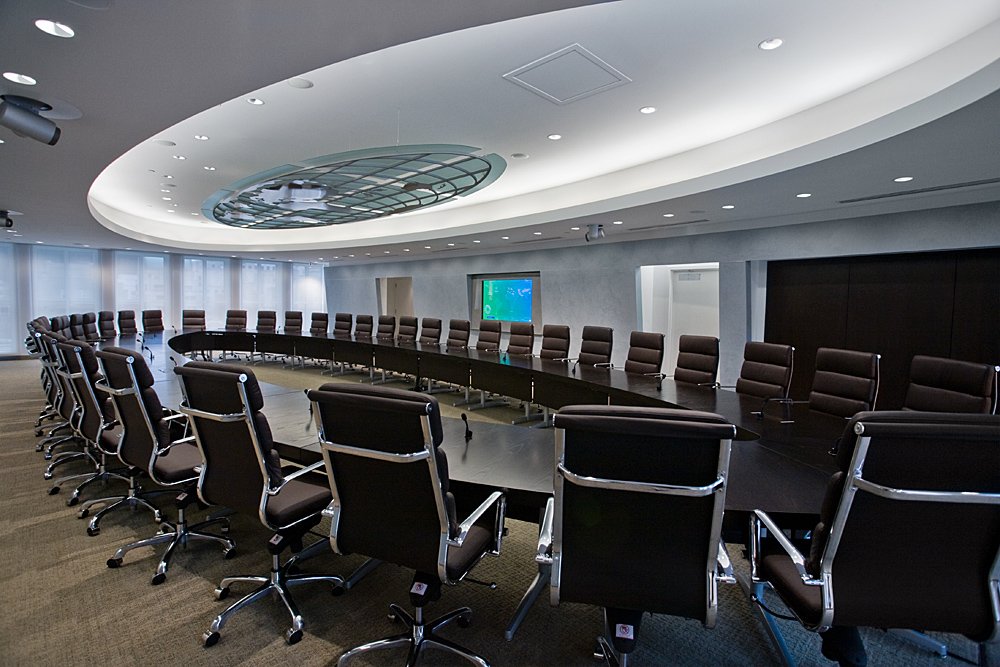
Lighting Designers
Who We Are and What We Do
Introduction
Architectural lighting design is both an art and a science. The artistic part involves understanding the aesthetics of the architect’s work in shaping space and the interior designer’s selections of colors, materials and finishes, then supporting and enhancing those elements while providing appropriate brightness for the occupants’ activities. The science of lighting design encompasses a wide range of areas including an understanding of the interaction between light, vision and psychology, luminaire design and performance, the impact of the light spectrum on the colors of finishes and objects, lighting control systems, and code requirements.
Why Hire a Lighting Designer?
The first answer is that we can and should expect more than basic illumination in most of the spaces where we spend our lives, but we rarely get it. This is largely because few owners and architects place value on quality lighting design. Many believe that the architect or electrical engineer can design lighting that is good enough, and good enough is all that is needed. In fact, by one estimate less than 10% of commercial construction projects engage a professional lighting designer. But appropriate, high-quality lighting design doesn’t just happen. It’s thoughtfully planned by people with specialized knowledge.
A professional lighting designer is the only team member with the expertise, experience, and continuing professional education necessary to design a quality lighting environment. The International Association of Lighting Designers notes that, “Studies show the quality of light affects people in many different ways. For example, office worker satisfaction and productivity can be positively affected by well-designed illumination. Building owners and managers have the potential to add value, reduce costs, and enhance performance through the application of good lighting. It's no secret that people are attracted to well-lighted public facilities, commercial shopping districts, and parks. Good lighting enhances the mood and desirability of these spaces. It contributes greatly to people's sense of well-being… Through cost-control techniques, IALD lighting designers help clients realize improved energy efficiency and reduce lighting costs. The initial investment in a professional lighting designer is offset by a reduction of construction and operating costs.”
Here is a short set of links to other benefits of quality lighting design.
How Does Lighting Affect Mental Health In The Workplace, Forbes, December 2018
Optimizing Lighting for Better Learning, The Optical Society, April 2016
Does Lighting Boost Retail Sales?, LuxReview.com, June 2015
Impact of Light on Outcomes in Healthcare Settings, The Center for Health Design, 2006
Importance of Using a Lighting Designer, IALD.org
What Does a Lighting Designer Do?
Every lighting design begins with information gathering, progresses through fixture evaluation and selection, and is complete when the fixtures and control system are commissioned and accepted by the owner. Along the way, the lighting designer is expected to:
Provide light that is appropriate for the occupants’ visual tasks by:
Identifying visual tasks that are to be performed
Determining light levels that are typically required for the visual tasks
Considering factors that suggest the light levels be higher or lower than typical, such as occupant’s age, then selecting the project’s target light level
Design light that supports the room’s aesthetics or environment by:
Providing light of the appropriate brightness and color
Defining zones, boundaries, links, and/or separation among spaces
Using lighting techniques to expand or contract the perceived size of a room, indicate activity levels, and influence overall impressions
Applying lighting techniques that appropriately accent architectural or decorative elements
Create visual interest within the space by:
Revealing objects, materials, and surfaces selectively and appropriately
Using variations in distribution to emphasize important room elements/areas and deemphasize unimportant ones
Employing decorative lighting techniques and select decorative fixtures to create additional visual variety
Conserve energy, environmental resources, and the client’s money by:
Integrating daylighting into the lighting design where appropriate
Choosing energy and optically efficient fixtures
Selecting fixtures that offer the best value by weighing cost, quality, and performance
Including controls as part of the lighting design for code compliance and an added layer of energy savings
Comply with building codes and energy usage regulations by:
Understanding the applicable building code(s) and designing within their boundaries
Collaborating with the design team to select the best energy conservation strategy to meet or exceed the applicable energy code
Choosing and locating fixtures to comply with the Americans With Disabilities Act (ADA) and other relevant codes
What Identifies a Lighting Professional?
What qualifications one should expect a lighting designer to have? We’ve partially addressed in the previous section by outlining expectations. A lighting professional should be proficient in those tasks and skills. Some of that proficiency may be evidenced by the person’s education. Most architectural lighting designers come to the field with degrees in architecture, electrical engineering, interior design or stage lighting design. However, as the importance of lighting design becomes better understood and more universities offer degrees in the field, an increasing number of people are entering the profession after specific studies in architectural lighting design.
The professional credentials one would expect a lighting designer to have include:
Professional grade membership in the Illuminating Engineering Society (IES) and/or the International Association of Lighting Designers (IALD) which are the two most important professional lighting organizations in North America
The abbreviation “LC” after a designer’s name, which indicates they have passed the Lighting Certification exam of the National Council on Qualifications in the Lighting Profession (NCQLP). This credential is mandatory for the lead lighting designer on all federal government projects overseen by the General Service Administration (GSA)
The abbreviation “CLD” after a designer’s name, which indicates they have passed the Certified Lighting Design exam of the IALD.
Many, though certainly not all, lighting designers also have green credentials related to LEED, WELL Building Standard and/or other green building programs.
We should add that a lighting professional also actively engages in continuing education to master new design skills, to learn about new techniques and technologies, and to maintain professional credentials, which typically have a two- or three-year renewal cycle. Continuing education can come from a variety of sources including:
Online courses and seminars
Courses and seminars offered at trade shows and the conventions of professional organizations
In house seminars presented by trained sales people or manufacturers
Publications from professional organizations including recommended practices, design guides, and profiles of particularly successful projects
Participation in the committees of professional organizations that write recommended practices, design guides, codes, or similar authoritative documents
